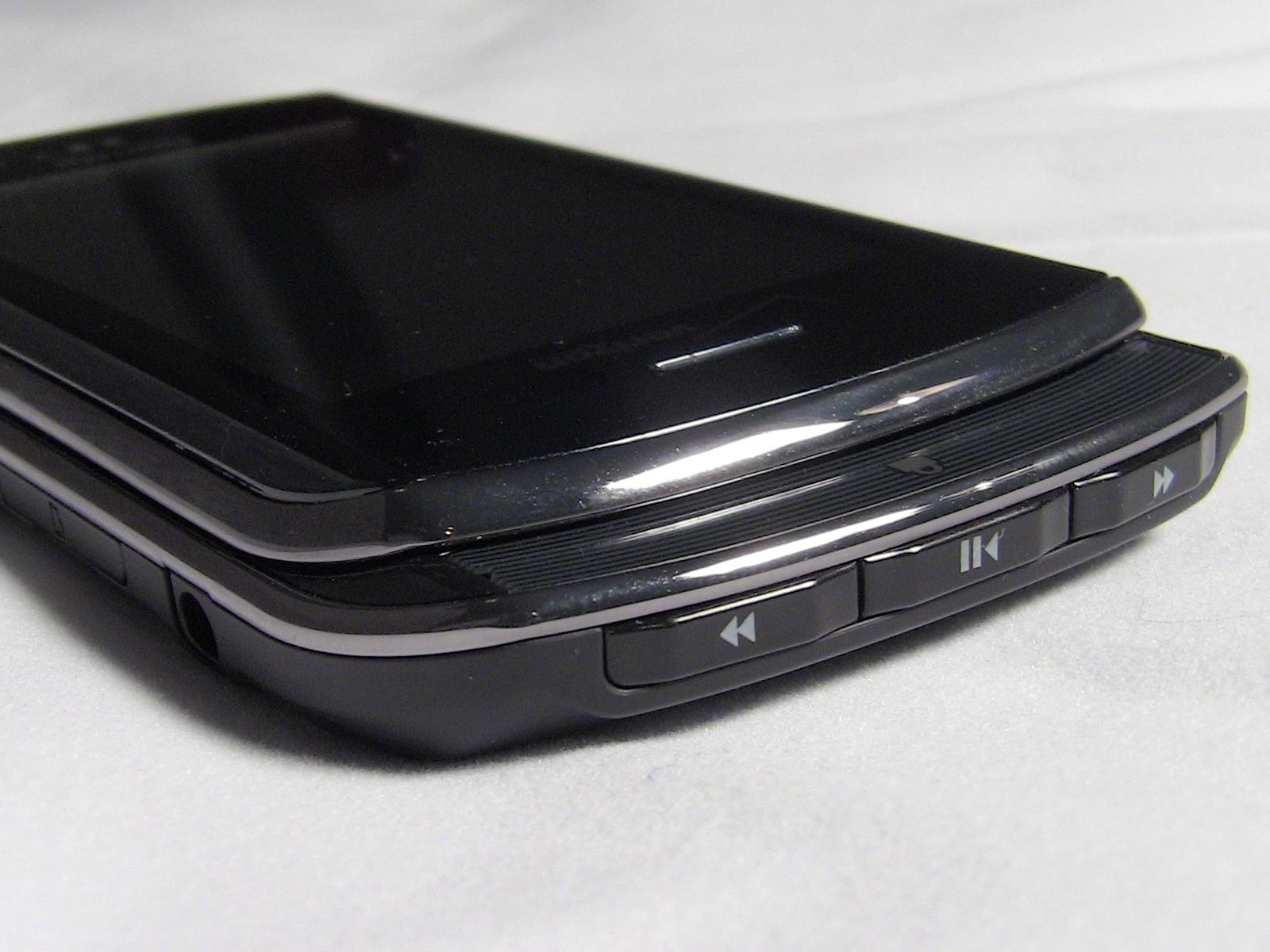
Love listening to music on the go? Don't want a smartphone? Verizon and Pantech have heard your cries for help and have produced just the phone for you - the Pantech Crux. It features a music player with external media controls, a 3.5mm headphone jack, access to V Cast Music with Rhapsody, and it comes pre-installed with a 1 GB microSD card. Does all of this come together for a media-rich experience?
The Crux's interesting form factor that I mentioned earlier is a slider that only slides to unlock the screen. By sliding the top panel down, you lock the screen, and by sliding it up, you unlock it. Nifty. Not really necessary, but nifty. The front panel, by the way, contains the 3-inch capacitive touchscreen display. This display has a resolution of 320 x 240.
The right side of the device contains the camera shutter button, a voice recognition button, the microSD card slot (a 1 GB card is pre-installed and it supports up to 32 GB), and the 3.5mm headphone jack. The volume rocker buttons and microUSB port are on the left side of the device. The top is where you'll find the aforementioned music controls. The Crux has a very solid build quality and feels good in the hand.
I had a few problems with the capacitive touchscreen, but it wasn't too terrible. There were times when I would have to perform a motion a couple of times before I got the desired response and then sometimes it would select an item that I had barely touched and didn't mean to select.
The keyboard was a different story. While the touchscreen was fine for basic functions like scrolling and swiping, it was not that great for typing. I had several errors and became so frustrated with it that I learned to dread any time I needed to use the keyboard to enter text. The Crux is NOT a messaging phone.
The UI on the Crux took some getting used to, and I'm not sure I like it. You're given three home screens that you can access by rotating around a 3D triangle. This is not a new concept, but the purpose of each screen seems poorly planned. One screen is basically the Main Menu, but you can still press the Menu button to reach the Main Menu. Another screen has multiple shortcuts for Twitter, Facebook, Gmail, YouTube, etc, but all of these simply go to ONE program, Social Beat. On the third screen, you can place shortcuts for pictures, video, or other media - a feature I've never found to be useful. In short, the UI is different and unique, but it seems to be the result or either poor planning or trying to hard to make it cool.
Battery life on the Crux was slightly below average. Though it ships with an 1100 mAh battery, I only managed to squeeze about three days out of it on standby. With normal use, it lasted about 1-2 days.
Camera performance also wasn't stellar, but I think it suits its purpose just fine. Though it has a 3 megapixel camera, without a flash or an autofocus, the best it can do is simple snapshots for sending to friends via MMS.
The Pantech Crux is definitely not a messaging phone, though no one claimed that it was, but I'm not even sure I like it as a featurephone. However, I understand that most of my qualms were simply due to personal preference. You may like the wonky UI or the interesting form factor. If so, go for it. It performed well and is well equipped.

The Good: Unique form-factor; interesting UI may appeal to some; 3.5mm headphone jack; external media controls.
The Bad: UI may appeal to some, but may be a turn-off for others; mediocre camera performance; virtual keyboard wasn't that great.
The Verdict: The Pantech Crux is great for someone who listens to a lot of music or who needs a basic featurephone, but wants something with some style. It's not the phone for someone who does a lot of texting.
If you want more Crux goodness, check out my Pantech Crux video review!